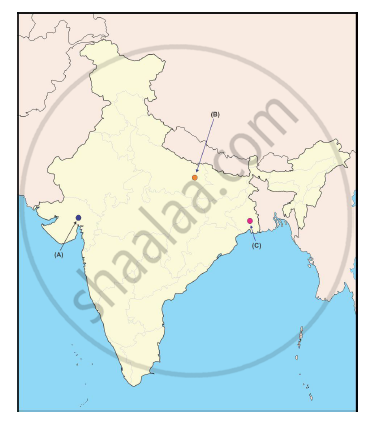Advertisements
Advertisements
Question
Explain with examples the role of industrialist in the freedom struggle of India.
Solution
The industrialists supported the civil disobedience movement with much enthusiasm.
1.They lent their support to the Congress in protest against the colonial policies that restricted indigenous business enterprises. They expected protection against imported foreign goods and a rupee-sterling ratio that would have discouraged imports.
2.They also gave financial assistance and refused to buy or sell foreign goods. The industrialists formed associations like the Indian Industrial and Commercial Congress (in 1920) and the FICCI in (1927).
3.The promise of Swaraj was viewed by industrialists as freedom from the domination of market by foreign goods. The industrial groups withdrew their support after the Second Round Table Conference due to its failure.
4.They were also concerned about the rise of socialist ideology in the Congress and the growth of militant activities which they feared as detrimental to their interests.
5. Purshottamdas Thakurdas and G.D. Birla attacked the colonial control over the Indian economy and supported the Civil Disobedience Movement.
APPEARS IN
RELATED QUESTIONS
What are public interest pressure groups
Why did Mahatma Gandhi decide to call off the Civil Disobedience Movement? Explain.
Three Features A, B and C are marked on the given political outline map of India. Identify these features with the help of the following information and write their correct names on the lines marked in the map:
A. The place where the cotton mill workers organized Satyagraha.
B. The place related to the calling off the Non – Cooperation Movement.
C. The place where the Indian National Congress Session was held.

Who had designed the 'swaraj flag' by 1921?
Compare the popular struggles of Nepal and Bolivia.
Why did a major protest erupt in 1926 in the Saigon Native Girls School in Vietnam? Explain.
How are popular struggles integral to the working democracy? Explain with an example of Bolivia's struggle against privatisation of water.
Match List I with list II and select the correct answer using the codes given below the lists:
|
List I |
List II |
||
|
1. |
Pressure group |
Α. |
Narmada Bachao Andolan |
|
2. |
Long-term movement |
Β. |
Asom Gana Parishad |
|
3. |
Single issue movement |
C. |
Women’s Movement |
|
4. |
Political party |
D. |
Fertilizer dealers’ association |
|
1 |
2 |
3 |
4 |
|
|
(a) |
D |
C |
A |
B |
|
(b) |
B |
A |
D |
C |
|
(c) |
C |
D |
B |
A |
|
(d) |
B |
D |
C |
A |
Mewat is one of the most backward areas in Haryana. It used to be a part of two districts, Gurgaon and Faridabad. The people of Mewat felt that the area will get better attention if it were to become a separate district. But political parties were indifferent to this sentiment. The demand for a separate district was raised by Mewat Educational and Social Organisation and Mewat Saksharta Samiti in 1996. Later, Mewat Vikas Sabha was founded in 2000 and carried out a series of public awareness campaigns. This forced both the major parties, Congress and the Indian National Lok Dal, to announce their support for the new district before the assembly elections held in February 2005. The new district came into existence in July 2005.
In this example what is the relationship that you observe among movement, political parties and the government? Can you think of an example that shows a relationship different from this one?
How do pressure groups and movements strengthen democracy? Explain.
